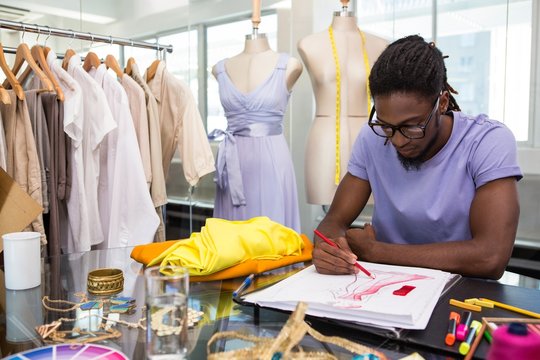Fashion has always been a dynamic expression of culture, identity, and creativity. From the elaborate dresses of the 18th century to the tailored suits of the 20th century, fashion has continuously adapted to social, political, and technological changes. In the modern era, the evolution of fashion is more pronounced than ever, fueled by rapid technological advancements, shifting societal values, and increasing environmental awareness.
The way we dress today goes beyond mere trends and aesthetics; fashion is now a powerful tool for self-expression, activism, and sustainability. As we enter the third decade of the 21st century, fashion is evolving to reflect the complexity of contemporary life. This article will explore how fashion is changing in the modern era, including the role of technology, sustainability, inclusivity, and cultural influences.
1. Technology and the Digital Age
The digital revolution has had a profound impact on nearly every industry, and fashion is no exception. The rise of social media, e-commerce, and digital design tools has transformed how fashion is created, marketed, and consumed. Here are some key ways technology is shaping the fashion industry:
1.1 Virtual Fashion and Digital Clothing
In the past few years, digital fashion has emerged as a new frontier in the industry. Virtual clothing, worn by avatars in video games or on social media platforms, is no longer a novelty but a growing trend. Brands are designing and selling digital-only clothing for individuals to wear in virtual spaces, such as on Instagram or within gaming platforms like Fortnite. This allows consumers to express their style without the environmental impact of physical clothing production.
Brands like Balenciaga, Gucci, and Prada have begun experimenting with virtual clothing lines, creating a new form of fashion consumption that caters to the digital world. This trend reflects the growing intersection of technology and lifestyle, as more people engage in virtual spaces that mirror reality.
1.2 Artificial Intelligence in Design and Manufacturing
Artificial intelligence (AI) is revolutionizing the fashion industry in both the design process and production. AI-powered tools are being used to predict trends, automate the design process, and improve production efficiency. Algorithms analyze consumer data, social media trends, and search patterns to forecast which styles will be popular in the coming seasons.
AI can also be used to create custom designs based on individual preferences, enabling consumers to order personalized clothing. Additionally, AI-powered manufacturing systems can streamline production, reduce waste, and increase sustainability. This use of technology ensures that fashion remains agile and responsive to changing consumer demands.
1.3 The Rise of Fashion Influencers and Social Media
Social media platforms like Instagram, TikTok, and YouTube have become integral to the fashion world. Influencers and content creators have taken center stage, shaping fashion trends and redefining what it means to be a “celebrity.” These digital influencers have created new avenues for promoting fashion, with brands partnering with them for product launches and campaigns.
In the modern era, fashion is no longer just about traditional advertising; it’s about creating authentic relationships with consumers through social media. Social media platforms have democratized fashion, making it accessible to a broader audience. People no longer need to rely solely on fashion magazines or runway shows to see the latest styles—they can turn to influencers, celebrities, and peer reviews to guide their fashion choices.
2. Sustainability and Ethical Fashion
As global awareness about climate change and environmental degradation grows, sustainability has become a key focus within the fashion industry. The fast-fashion model, which thrives on the rapid production of cheap, low-quality clothing, has been criticized for contributing to pollution, waste, and unethical labor practices.
In response to this, there is a growing movement toward sustainable and ethical fashion practices. Brands and consumers alike are increasingly prioritizing eco-friendly materials, ethical manufacturing processes, and long-lasting garments. Here are some major trends within sustainable fashion:
2.1 Slow Fashion
In contrast to fast fashion, slow fashion emphasizes quality over quantity. Slow fashion promotes buying fewer, higher-quality pieces that will last longer and have a smaller environmental footprint. Consumers are encouraged to invest in timeless, versatile pieces rather than following fleeting trends.
Slow fashion supports ethical production processes, ensuring fair wages and safe working conditions for laborers. It also prioritizes the use of natural fibers, recycled materials, and eco-friendly dyes, reducing the overall environmental impact of clothing production.
2.2 Secondhand and Vintage Shopping
The trend of secondhand and vintage shopping has gained significant momentum in recent years. Thrift stores, consignment shops, and online resale platforms like Poshmark, Depop, and ThredUp have made it easier for consumers to find pre-loved clothing at affordable prices. This movement promotes the idea of recycling clothing, extending the lifecycle of garments, and reducing textile waste.
Vintage shopping not only supports sustainability but also allows individuals to find unique, one-of-a-kind items that contribute to a more personalized sense of style. Many consumers now view secondhand shopping as a chic and sustainable alternative to buying new clothes.
2.3 Innovations in Eco-Friendly Materials
Fashion designers are increasingly looking for ways to create garments using materials that have a lower environmental impact. Innovations in textile production have led to the development of biodegradable fabrics, recycled fibers, and plant-based alternatives to leather, such as mushroom leather and pineapple fibers.
Additionally, some companies are using technology to develop new materials that are both sustainable and functional. For example, companies are exploring the use of algae-based fabrics, which offer a sustainable alternative to synthetic textiles. This focus on eco-friendly materials is helping to create a fashion industry that is more aligned with environmental preservation.
3. Inclusivity and Diversity in Fashion
One of the most significant shifts in modern fashion is the growing focus on inclusivity and diversity. For decades, the fashion industry was criticized for its narrow definitions of beauty and representation. Runway shows and ad campaigns often featured only one body type, skin color, and gender identity. However, in recent years, there has been a concerted effort to make fashion more inclusive and accessible to everyone, regardless of size, race, gender, or ability.
3.1 Body Positivity and Size Inclusivity
The body positivity movement has prompted fashion brands to reconsider how they market and design clothing. There is now a demand for clothing that fits and flatters all body types. Many designers are embracing the concept of size inclusivity, offering extended size ranges and designing clothes for people of all shapes and sizes.
This shift is not just about creating garments that fit, but also about celebrating diverse bodies in fashion campaigns and runway shows. Brands like Savage X Fenty, Aerie, and Universal Standard have been at the forefront of promoting body positivity and challenging traditional beauty standards in fashion.
3.2 Gender Fluidity and Non-Binary Fashion
Fashion is also becoming more gender-fluid, with increasing recognition of non-binary and gender-nonconforming individuals. Many designers are now creating collections that transcend traditional gender norms, offering clothing that can be worn by anyone, regardless of gender. This evolution reflects a broader societal shift toward embracing gender diversity and challenging rigid gender roles.
Designers like Telfar and gender-neutral brands like Phluid Project are leading the way in creating fashion that is inclusive of all gender identities. The modern fashion industry is increasingly recognizing that clothing should not be defined by gender but by personal style and expression.
3.3 Racial and Cultural Representation
The importance of racial and cultural representation in fashion is another aspect of diversity that has gained momentum in recent years. Models of different ethnicities are being featured in high-profile campaigns, and designers from diverse cultural backgrounds are being recognized for their unique perspectives and contributions to the industry.
Fashion is becoming more reflective of the world’s diverse cultures, with designers drawing inspiration from their heritage while also challenging cultural appropriation. The movement toward inclusivity and cultural sensitivity is reshaping the global fashion landscape and making it more representative of the world we live in.
4. The Future of Fashion: What’s Next?
The future of fashion is exciting, with many possibilities on the horizon. One of the most significant developments is the integration of technology with fashion, from virtual clothing to AI-driven design. Additionally, sustainability will continue to be a driving force in the industry, with brands focusing on reducing their environmental footprint and creating more ethical supply chains.
The demand for inclusivity and diversity will also continue to shape fashion in the coming years. As consumers become more conscious of social issues, they will increasingly support brands that align with their values. The fashion industry will need to adapt to these changes to remain relevant and successful in an ever-evolving global marketplace.
5. FAQs on the Evolution of Fashion
1. How has technology changed the fashion industry?
Technology has changed fashion in numerous ways, including the rise of digital fashion, AI in design and production, and the influence of social media and influencers in shaping trends.
2. Why is sustainability important in fashion?
Sustainability is important in fashion because the industry is one of the largest contributors to pollution and waste. Adopting eco-friendly materials, ethical practices, and recycling helps mitigate these environmental impacts.
3. What is slow fashion?
Slow fashion emphasizes quality over quantity, encouraging consumers to buy fewer, more durable pieces that have a smaller environmental footprint compared to fast fashion.
4. How does fashion promote inclusivity?
Fashion promotes inclusivity by embracing diversity in body types, gender identities, and ethnic backgrounds. Brands are expanding size ranges, creating gender-neutral collections, and ensuring better representation in campaigns.
5. How is virtual fashion shaping the industry?
Virtual fashion allows consumers to buy digital clothing for their online avatars, reducing the environmental impact of physical garment production and offering a new way to express personal style in virtual spaces.
6. What role do fashion influencers play in modern fashion?
Fashion influencers have a significant impact on modern fashion by setting trends, promoting brands, and shaping consumer behavior through their social media platforms.
7. Will sustainability be the future of fashion?
Yes, sustainability is likely to be a major focus in the future of fashion, with brands and consumers prioritizing eco-friendly materials, ethical practices, and reducing environmental impact.
6. Conclusion
Fashion is evolving rapidly in the modern era, influenced by technological advancements, shifting societal values, and a growing commitment to sustainability and inclusivity. The industry is becoming more dynamic, diverse, and innovative, offering new ways for consumers to express themselves and engage with the fashion world. As we move forward, the intersection of technology, sustainability, and inclusivity will continue to define the future of fashion, ensuring that it remains relevant, responsible, and accessible to people of all backgrounds and identities.
Key Takeaways:
- Digital Fashion: The rise of virtual clothing and digital fashion marks a new era in the way people engage with style and self-expression.
- Sustainability: The fashion industry is increasingly prioritizing eco-friendly practices, including slow fashion, secondhand shopping, and the use of sustainable materials.
- Inclusivity: Fashion is becoming more inclusive, with brands embracing body positivity, gender fluidity, and racial diversity.
- Technological Innovations: AI and other technologies are revolutionizing design, manufacturing, and personalization in the fashion world.
- Cultural Representation: The modern fashion industry is more reflective of diverse cultures and is pushing against cultural appropriation.




